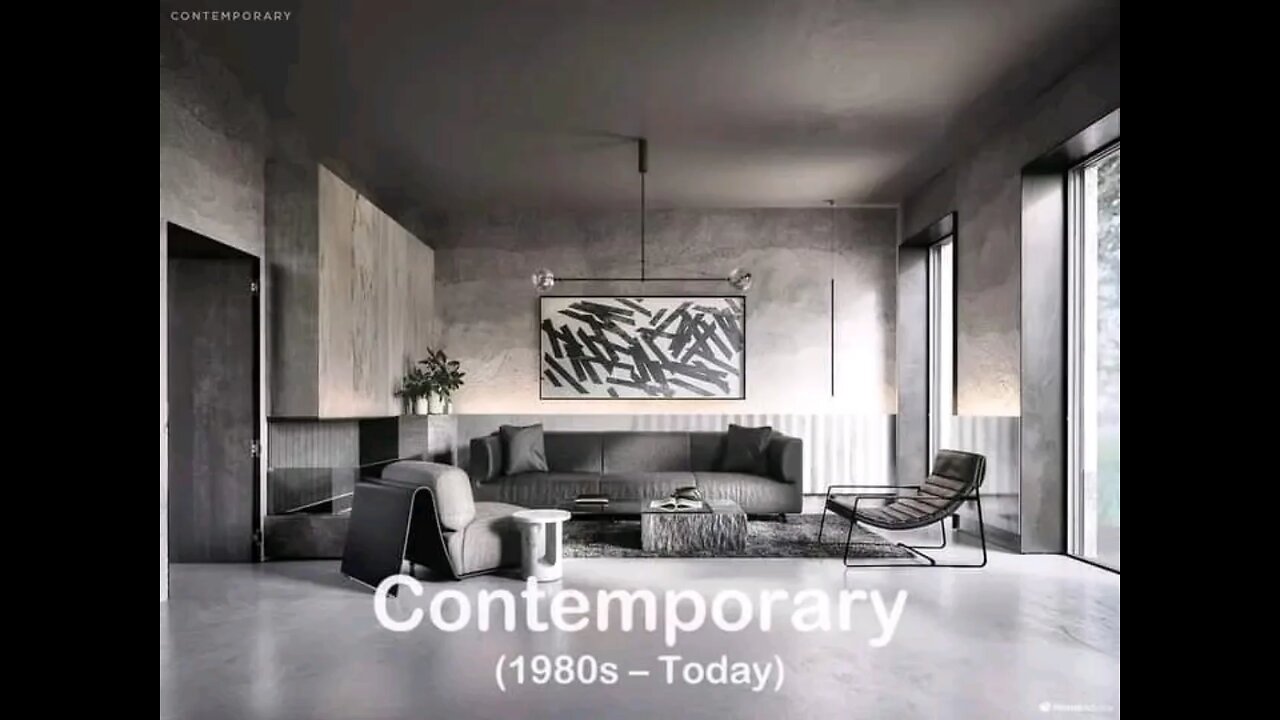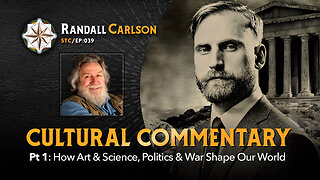Premium Only Content

Types & Era's of interior design in universe
### Baroque (1600-1750)
Baroque interior design is characterized by grandeur, opulence, and a high level of detail. It features bold colors, lavish decorations, intricate patterns, and heavy use of gold. Key elements include large-scale ceiling frescoes, sculpted walls, and extravagant furniture. The style often includes dramatic contrasts and a sense of movement in the design.
### Rococo (1730-1770)
Rococo, emerging in France, is a lighter and more playful extension of Baroque. It features pastel colors, delicate ornamentation, asymmetrical designs, and themes of romance and nature. Curved forms, floral motifs, and light-hearted themes are common. Furniture is more refined and often includes cabriole legs and elaborate carvings.
### Neoclassical (1750-1850)
Neoclassical design draws inspiration from the art and culture of Ancient Greece and Rome. It emphasizes simplicity, symmetry, and proportion. Interiors feature classical columns, clean lines, and a muted color palette with whites, grays, and earth tones. Decorative elements include classical motifs like urns, laurel wreaths, and mythological figures.
### Arts and Crafts (1880-1920)
The Arts and Crafts movement emerged as a reaction against industrialization, promoting handcrafted goods and simple forms. It emphasizes natural materials, functional design, and craftsmanship. Interiors are characterized by built-in furniture, woodwork, stained glass, and nature-inspired motifs. It values quality over quantity and the beauty of handmade objects.
### Art Nouveau (1890-1910)
Art Nouveau is known for its organic forms, flowing lines, and incorporation of natural elements. The style features intricate patterns, floral and plant motifs, and a mix of materials like glass, iron, and wood. Interiors often include decorative tiles, stained glass windows, and sinuous curves in furniture and architecture.
### Art Deco (1920-1940)
Art Deco design is glamorous, modern, and forward-looking, characterized by bold geometric patterns, rich colors, and luxurious materials. It features sleek lines, symmetry, and elements of exoticism. Common materials include chrome, glass, mirrors, and exotic woods. Decorative details often include zigzags, chevrons, and sunburst motifs.
### Modernism (1920-1970)
Modernism emphasizes function, simplicity, and the use of new materials and technologies. It favors open floor plans, clean lines, and minimal ornamentation. Interiors often feature neutral colors, natural materials like wood and leather, and an emphasis on form following function. Iconic furniture pieces from this era include designs by Le Corbusier, Mies van der Rohe, and Eames.
### Bauhaus (1919-1933)
The Bauhaus movement integrates art, craft, and technology, emphasizing function and industrial aesthetics. Design is minimalist and focuses on geometry, simple forms, and the use of modern materials like steel, glass, and concrete. Bauhaus interiors are practical, with a strong emphasis on functionality and the use of space.
### Post-Modern (1970s-Present)
Post-Modern design reacts against the austerity of Modernism, embracing eclecticism, whimsy, and irony. It mixes different styles and historical references, often with bold colors, playful forms, and unexpected materials. Interiors may feature a blend of old and new, with a focus on individuality and artistic expression.
### Contemporary (Late 20th Century-Present)
Contemporary design is ever-evolving, reflecting current trends and technologies. It emphasizes clean lines, open spaces, and a neutral color palette, often accented with bold colors. Contemporary interiors prioritize comfort and functionality, incorporating sustainable materials, smart home technology, and a blend of different styles to create a cohesive yet flexible aesthetic.
Each of these design eras and styles offers a unique approach to aesthetics, functionality, and the relationship between space and the objects within it.
The Grand Opulence of Baroque InteriorsThe Playful Elegance of Rococo DesignTimeless Symmetry: Neoclassical InteriorsHandcrafted Beauty: The Arts and Crafts MovementNature's Flow: Art Nouveau in Interior DesignGlamour and Geometry: The Art Deco EraFunction Meets Form: The Principles of ModernismIndustrial Aesthetics: Bauhaus Interior DesignEclectic Expression: Post-Modern InteriorsEvolving Trends: Contemporary Interior DesignThese titles highlight the unique characteristics and historical context of each interior design style and era.
-
 1:19:23
1:19:23
Josh Pate's College Football Show
13 hours ago $4.78 earnedBig Ten Program Rankings | What Is College Football? | Clemson Rage| Stadiums I Haven’t Experienced
72.7K1 -
 DVR
DVR
Vigilant News Network
18 hours agoBombshell Study Reveals Where the COVID Vaccine Deaths Are Hiding | Media Blackout
116K56 -
 1:17:59
1:17:59
Sarah Westall
14 hours agoDOGE: Crime & Hysteria bringing the Critics & the Fearful - Plus new CDC/Ukraine Crime w/ Dr Fleming
99.7K8 -
 45:39
45:39
Survive History
20 hours ago $10.98 earnedCould You Survive in the Shield Wall at the Battle of Hastings?
88.9K7 -
 1:50:28
1:50:28
TheDozenPodcast
18 hours agoViolence, Abuse, Jail, Reform: Michael Maisey
119K5 -
 23:01
23:01
Mrgunsngear
1 day ago $6.81 earnedWolfpack Armory AW15 MK5 AR-15 Review 🇺🇸
101K12 -
 25:59
25:59
TampaAerialMedia
1 day ago $4.58 earnedUpdate ANNA MARIA ISLAND 2025
65.4K4 -
 59:31
59:31
Squaring The Circle, A Randall Carlson Podcast
20 hours ago#039: How Politics & War, Art & Science Shape Our World; A Cultural Commentary From Randall Carlson
50K3 -
 13:21
13:21
Misha Petrov
20 hours agoThe CRINGIEST Thing I Have Ever Seen…
41.3K77 -
 11:45
11:45
BIG NEM
16 hours agoWe Blind Taste Tested the Best Jollof in Toronto 🇳🇬🇬🇭
29.9K1